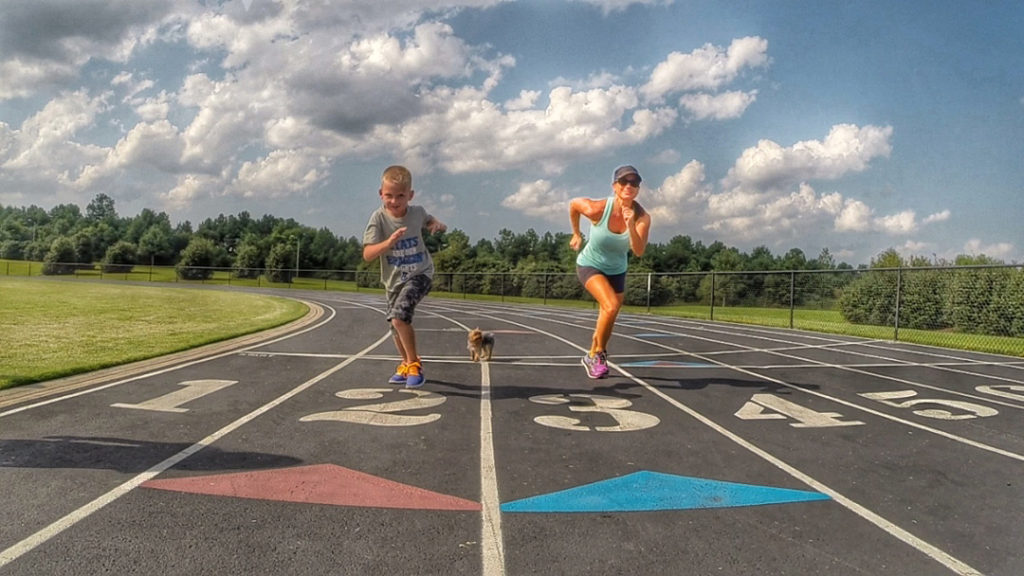
Growing older is a fact of life. We all want to live long and happy lives, but unhealthy habits can put a kibosh on the quality of those years. Listen, I know that you are busy. I’m busy too! But living healthy doesn’t have to be a chore. As an ACE (American Council on Exercise) Personal Trainer, Group Fitness Instructor and Health Coach for over 20 years, I believe if you incorporate these five habits into your normal routine, you will equip your body for the marathon that is life.
1. Aspire to Eat Clean
If you take a close look at a carrot, you’ll notice a lack of an ingredient list on its back. Just pure carrot. When you eat food that comes out of a box, a can or a take-out container, “pure” is instantly thrown out of the window. Instead of fueling your body with preservatives, chemically altered fats, extra sodium and artificial flavors courtesy of ingredients that you can’t pronounce, eat foods that are closest to their natural state as possible. Aim to get the majority of your daily calories from fresh fruits and vegetables, minimally processed whole grains, low-fat dairy, nuts, seeds, lean meats and fish. A body that is fueled operates better and longer than a body that is just fed.
2. Drink More Water
The advice varies—while some suggest drinking the classic eight 8-ounce glasses of water a day, others say to take your body weight, divide it in half and drink that many ounces. What we do agree on is that drinking water—lots of water—is a must-have healthy habit. Because water is our body’s principal chemical component and makes up about 60 perfect of our body weight according to the Mayo Clinic, water should be our drink of choice over sugary, calorie-laden drinks. Yes, Coca-Cola can provide a temporary caffeine boost, but it falls short in all other benefits. The Centers for Disease Control and Prevention reports that water helps your body maintain a normal temperature, lubricates and cushions joints, protects the spinal cord and other sensitive tissues, and gets rid of waste. Make a water bottle your fifth limb and continually refill it to hydrate your body the entire day.
3. Move More and Move Often
A 30-minute daily trip to the gym is good, but adding constant movement throughout your day is even better. Instead of finishing a workout and calling it quits for the day, activity should be a 24/7 priority. By now, most of us have heard that sitting is the new smoking and long bouts of inactivity really is the kiss of death. The Sax Institute’s “45 and Up Study” found that adults who sat for 11 hours or more a day had a 40 percent greater risk of dying in the next three years compared with those who sat for fewer than four hours a day. Stand up every half hour at work, lap your house while talking on the phone, add a short nighttime walk—it doesn’t matter how you do it, just move more. I tell my clients everyday that a workout of some sort is a personal triumph over laziness and procrastination!
4. Think Positive
Thoughts are powerful, so be sure to pay attention to yours. Do you encourage yourself with positivity or hold yourself back with negativity? The Mayo Clinic reports a number of health benefits associated with positive thinking, including increased life span, lower rates of depression, greater resistance to the common cold and reduced risk of death from cardiovascular disease, among many other things. Hang your favorite uplifting quotes on your fridge or bathroom mirror. Come up with a positive mantra that you repeat to yourself when you feel negativity swirling in your head. Make it a goal each day to be more positive than the day before. A happier life is a longer one. One of my favorite quotes is by Ralph Waldo Emerson: “For every minute you are angry, you lose sixty seconds of happiness.”
5. Don’t Forget to Strength Train
Too often people get psyched that they are exercising most days of the week—with some type of cardio—and they forget about strength training. Not building and maintaining muscle could be one of the biggest mistakes related to your health. Studies have shown that after the age of 40, people lose about 8 percent or more of their muscle mass each decade. Not only do muscles keep our bodies functional, mobile and strong, but they also help burn calories even when you’re not working out. Seriously, muscle is the key to metabolism in our golden years. “Strength training” does not mean you need to become a body builder and lift heavy barbells. Free weights, resistance bands, muscle sculpt classes or even using your own body weight with push-ups, planks and squats all work.
Paula Smith, ACE CPT
